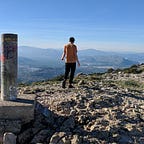Do try this at work #4: Lean Coffee
The ‘Lean Coffee’ meeting structure ☕
Lean Coffee is a simple and wonderful meeting structure that’s perfectly suited to teams exploring new ways of working. People gather, suggest agenda items in real time, vote on the suggested topics, and discussion begins.
Crucially here, the group — not just the boss — suggest and select the discussion topics. The group also decides which order to discuss them and when to move on to the next topic. Everyone in the group is included and everyone has an equal opportunity to contribute topics and their thoughts.
“The format for a Lean Coffee is very simple. This is intentional. It is meant to be the least structure necessary for a coherent and productive meeting. No more, no less” — Jim & Jeremy
Lean Coffee was created by Jim Benson and Jeremy Lightsmith in Seatle in 2009. It started out offline/in-person and has since moved online too. Either way, it works beautifully when combined with a ‘circle discussion’, which ensures that no voice dominates, nor are there any passengers. It works best when practised regularly by teams or groups no bigger than ten. Here’s how to give it a go 👇
Lean Coffee — the steps 🔢
- Arrange to meet in person or remotely. If remote then use Butter — a free alternative to Zoom/Teams/Meet which integrates Miro, and Miro have a Lean Coffee template 🎉 — you’ll need to create your own Lean Coffee board in Miro in advance of the session, then once in Butter click ‘New Miro board’ and you’ll see it.
- Ask people to propose the topics or questions they would like to discuss. You can leave this wide open or set a theme, up to you.
- Each person writes their proposed topic/s or question/s on sticky notes — one per note and keep the word count to a minimum for readability.
- All topics are placed on a surface such as a wall, table or Miro board if you’re online. Merge duplicate topics and if similar ideas are proposed ask the group if they would like to discuss these separately or merge them.
- Each person is given three votes and you can spread your votes across topics or use them all on one topic. If meeting in person you can ‘dot vote’ using Sharpie/marker pens; if online use Miro’s vote function (paid plan only); and if you’re on a free Miro plan use thumb emojis instead of voting 👍
